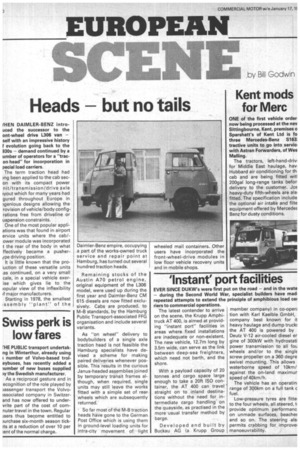'Instant' port facilities
Page 72

If you've noticed an error in this article please click here to report it so we can fix it.
EVER SINCE DUKW's were first put on the road — and in the wate — during the Second World War, specialist builders have mad, repeated attempts to extend the principle of amphibious load car riers to commercial operations.
The latest contender to arrive on the scene, the Krupp Amphitruck AT 400, is aimed at providing "instant port" facilities in areas where fixed installations are inadequate or non-existent. The new vehicle, 12.7m long by 3.5m wide, can serve as the link between deep-sea freighters, which need not berth, and the shore.
With a payload capacity of 20 tonnes and cargo space large enough to take a 20ft ISO container, the AT 400 can travel straight on to inland destinations without the need for intermediate cargo handling. on the quayside, as practised in the more-usual transfer method by barge.
Developed and built by Buckau AG (a Krupp Group member company) in co-oper tion with Karl Kaelble GmbH, company best known for it heavy haulage and dump truck: the AT 400 is powered by Deutz V-12 air-cooled diesel er gine of 300kW with hydrostati power transmission to all fou wheels and/or to the singlE screw propeller on a 360 degre swivel mounting. This allows waterborne speed of 10km/ against the on-land maximur speed of 40km/h.
The vehicle has an operatin, range of 300km on a full tank c fuel.
Low-pressure tyres are fine, to the four wheels, all steered, t, provide optimum performanc on unmade surfaces, beaches and so on. The steering als, permits crabbing for improve, manoeuvrability.












































































































